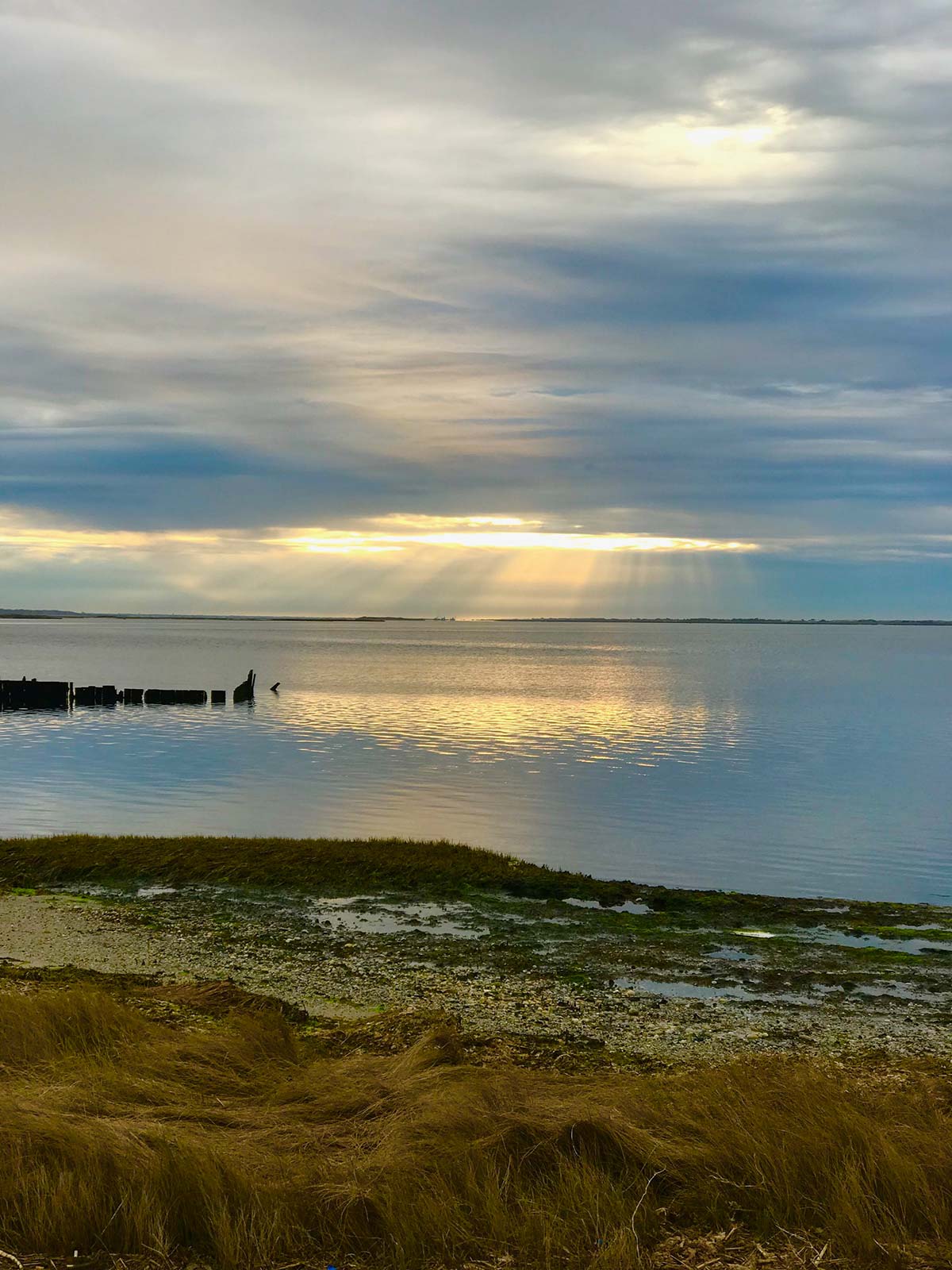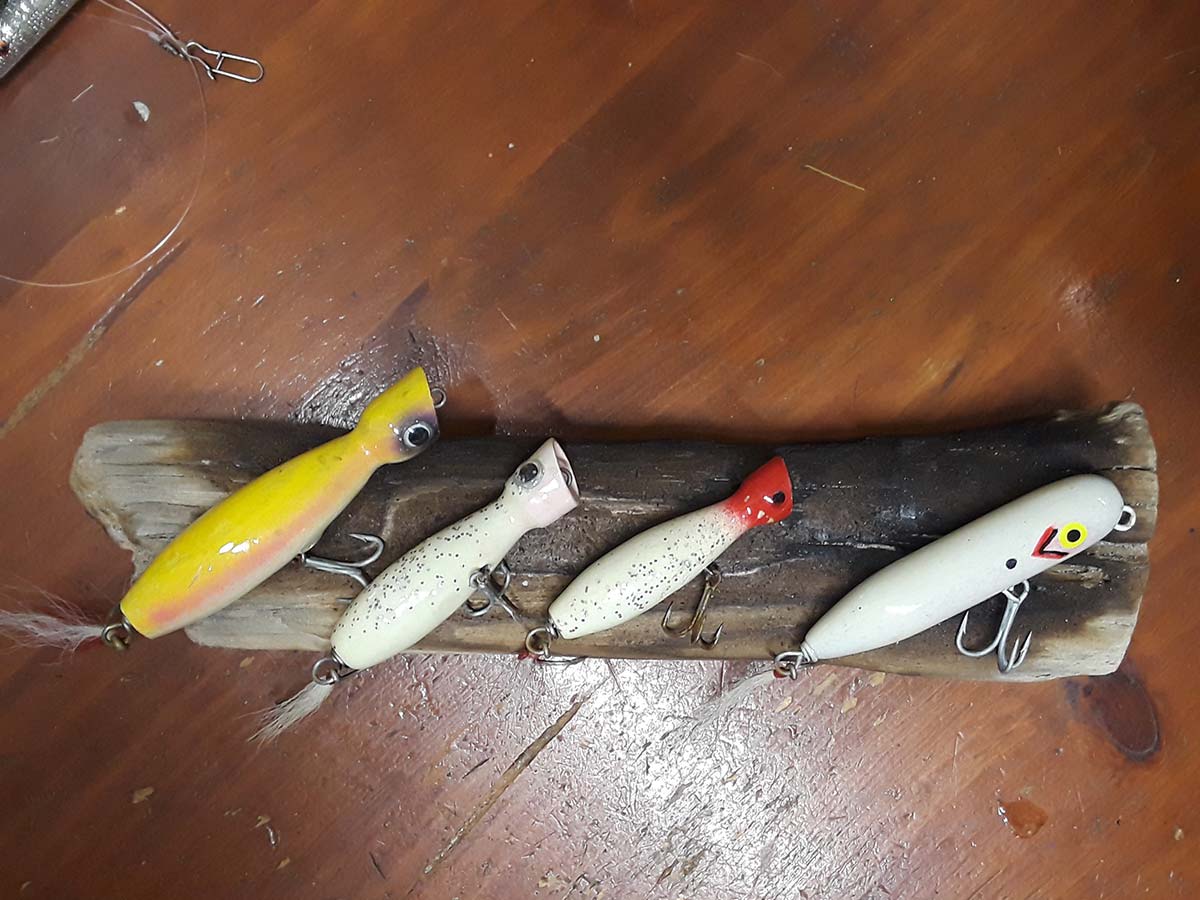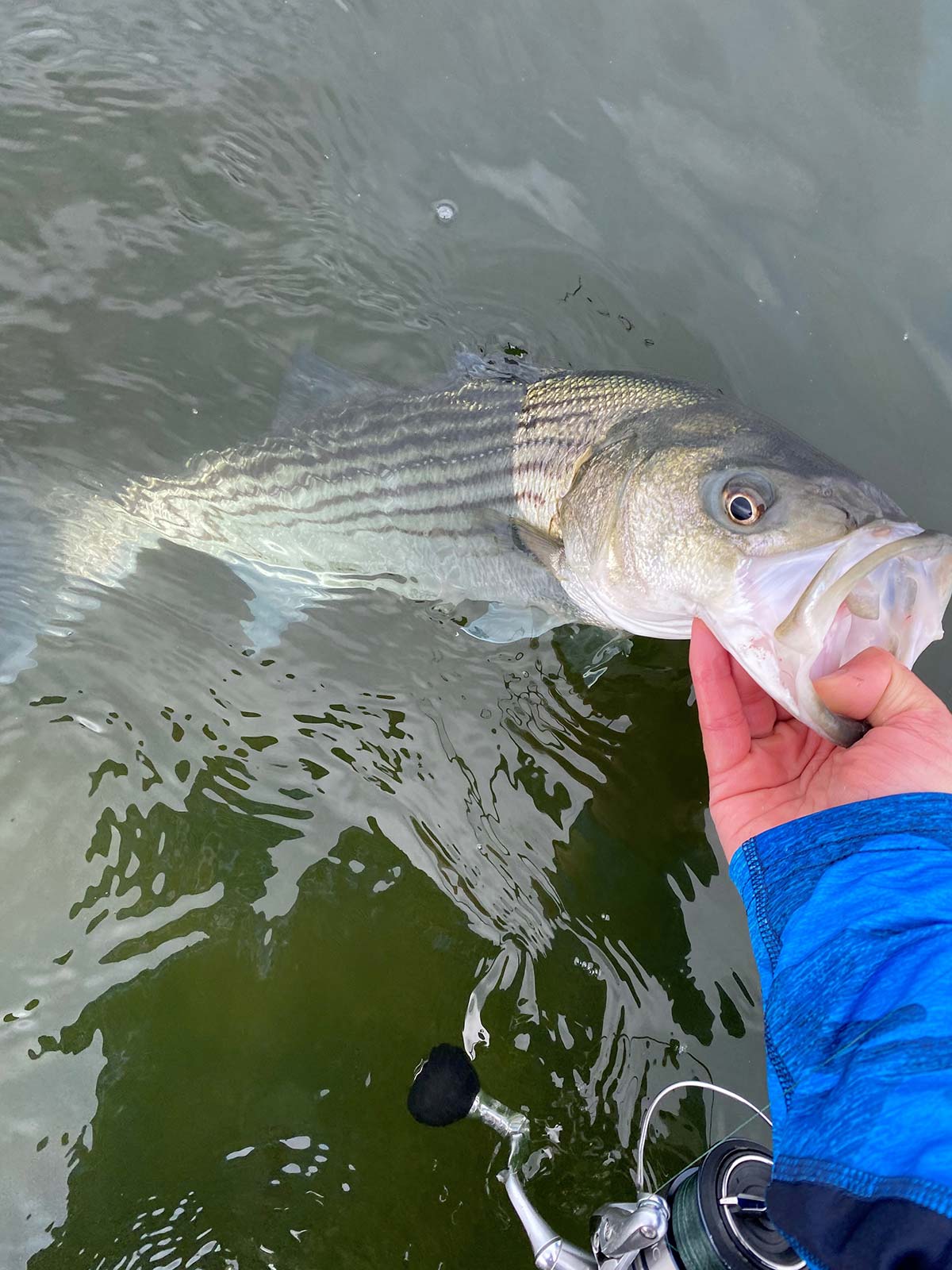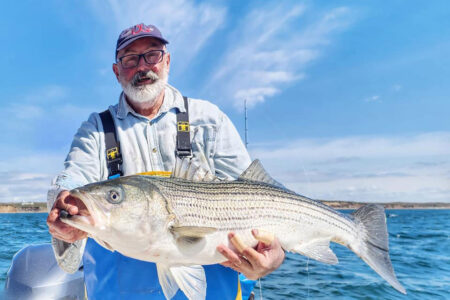
The stage is set for some excellent light tackle topwater action!
The early morning mist settled over the bay as the hint of dawn appeared on the eastern horizon. I quietly made my way out onto the marsh and casted parallel to the shoreline—the small surface lure landed several feet from the bank—I popped it twice and let it rest. A fish swirled on the plug but did not take my offering. I repeated that cadence again and this time the fish inhaled it! The bass bolted from the shallows and headed for deeper water giving me a great fight on the light action outfit that I was using. After enjoying a spirited battle with an early season schoolie, it was quickly released into the gin clear water.
Scenes like that play out every springtime along the miles of bay shorelines that run along the South Shore of Long Island. Schools of hungry stripers are prowling the inshore waters eager for a meal during the spring migration. Bait fish are gathering in the rivers and creeks and water temperatures are just right—the stage is set for some excellent light tackle topwater action!
Usually around the middle of April is when the consistent action starts to take place in the central to eastern half of the South Shore. Resident fish start to mix with migrating schools as the water warms. The further west you travel, the earlier that this takes place.
The Right Setting
A large amount of undeveloped shoreline on the mainland side of the bays is prime hunting grounds for these early season stripers. Countless creeks and drains wind through the marsh banks, emptying their bait bounty to the waiting bass. Lots of forage is on the menu, including spearing, menhaden, alewives, shrimp and crabs. Look for areas that have outflows nearby. Marsh banks that are near drop-offs and points that extend out a little are always worth prospecting. Also look for rips that set up along the channel edges as these can be areas that can be ambush points for the predators in the form of eddies and bottom depressions. Areas along the sod banks that are undercut quite a bit are prime areas that a lot of anglers overlook. I’ve had many fish hit directly where the bank meets the water. Coves are also great places to investigate, because at times the bait can get corralled in there and it becomes easy pickings for the linesiders. Of course having calm winds makes the presentation of a small popper on the surface shine even more. When using this type method, keep an eye on your wind forecast for minimal disturbance.

Get Tactical
Many anglers start off in the spring using soft plastics and small bucktails, which are highly effective on these stripers during the spring, but my favorite way of targeting them is with small floating poppers and spook-type lures. They will produce well when worked in a slow manner. Experiment with different retrieves, such as three pops and a pause, or a slow retrieve creating a “v” wake, then pausing for a few seconds. The bass will many times follow your offering right to your feet so be prepared for a strike at any point in your retrieve. Keep a close eye on your plug at all times. The fish will signal their presence by swirling on the plug—maybe several times in a row but still will not take it at times. That’s when I will vary my presentation on the next cast for something a little faster. You will soon find out what kind of retrieve they will commit to. I’ve had times when they would demolish a lure as it just sat there motionless. Then there were times when a faster cadence triggered strikes too. With the spooks, vary “the walking the dog” retrieve speeds until you hone in to what appeals to the fish on a particular day.
When approaching an area, make some casts standing back away from the water before heading out on the bank or into the water. Fish will be in close sometimes and you don’t want to startle them. The poppers I like to use are wooden floating models in the 3/4 to 1 1/2 ounce range. These let me effectively work them in the manner in which I described. Gibbs, Tsunami and many custom builders produce nice plugs for this purpose. The Polaris style is my favorite with a single bucktail dressed rear hook. They cast well and I like the smaller profile they project.
The tides I like concentrate on in these areas is the outgoing from mid to low. I’ve had great success at first light and at dusk when these two factors coincide. Baitfish get drawn out of the marshes and the bass are waiting for an easy meal. The turn from slack to incoming also can be good, so if you have the time, stick around.

Go Lighter
Keep your tackle on the light side so you can work these lures correctly and have a blast with these spunky stripers. A 3000 series reel spooled with 15 to 20-pound braid matched to a light action 7 to 8-foot rod is all you need. A 3-foot leader of 20-pound test fluorocarbon or mono and a selection of surface lures, and you’re good to go! Remember to crush the barbs on your hooks for easy release and try not to handle the fish with gloves on because it can remove the protective slime layer. Most of the fish you will encounter will be around the schoolie to the current slot size.
I’ve had some amazing sessions fishing with this type of tackle in the setting described above. While I have my way of going about it based on what worked for me in the past, try to incorporate a little of your own style to the methods I describes. Remember, a successful fisherman can adjust on demand to whatever unpredictable changes are thrown at them.




